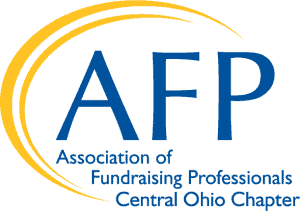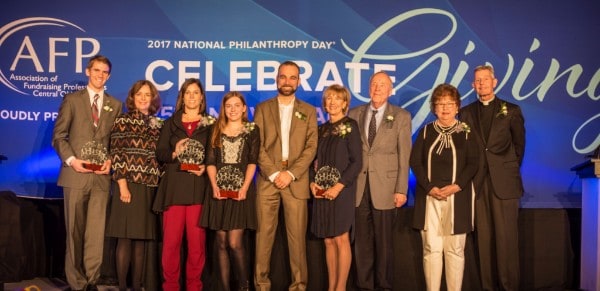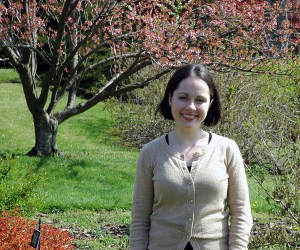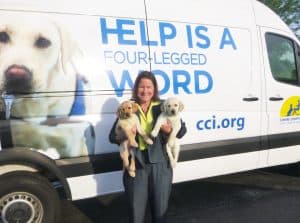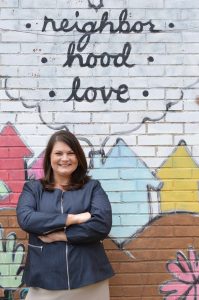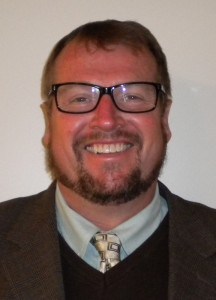To commemorate Pride Month, AFP International talked with LGBTQ members about their experiences in the fundraising community, working with donors and boards, and what advice they have for fundraisers of all backgrounds.
The month of June was chosen for LGBTQ (Lesbian, Gay, Bisexual, Transgender and Queer) Pride Month to commemorate the Stonewall riots in Greenwich Village in New York City, which occurred at the end of June 1969. Many pride events are held during this month to recognize the significant impact the LGBTQ community has had on the world.
To commemorate Pride Month, AFP talked with LGBTQ members about their experiences in the fundraising community, working with donors and boards, and what advice they have for fundraisers of all backgrounds.
Things have changed significantly for the LGBTQ community since the Stonewall Riots, of course, and even more so over the last twenty years. “Yes, it’s changed positively since I’ve been in fundraising,” said Josh Newton, CFRE, president and CEO of the University of Connecticut Foundation in Storrs, Conn. “Back in the late 90s, being gay or lesbian was more of an issue, even at places you might have considered progressive or expected to be more open and welcoming. Now, for me, being out and gay in the workplace simply isn’t an issue anymore—it’s gone mainstream. But I also realize that not every LGBTQ fundraiser is in the same workplace situation.”
“My experience in the profession parallels the experience in the broader U.S. and world culture,” said Robbe Healey, ACFRE, vice president for philanthropy at Simpson Senior Services in Bala Cynwyd, Pa. “I don’t feel like the nonprofit sector is significantly ahead of the rest of the world in terms of acceptance of the LGBTQ community. We continue to move forward, with some ups and down, but there remain organizations that are either slower to accept change or are simply resistant to change. There are regional differences, as well as differences by issue or subsector, and I think that’s to be expected.”
Ana Maria Dapena, a consultant in Puerto Rico, agrees. She notes that while Puerto Rico has come a long way in terms of rights for the LGBTQ community, she finds “crude homophobia” surfacing all the time. “It can be exhausting,” she says. “On one hand, we had something like the tragedy at the Pulse night club in Orlando, where 23 of the victims were from Puerto Rico, and there was a massive outpouring of support here. But then there are the little things—conversations where suddenly someone you thought you knew says something disparaging about the LGBTQ community. It hits you hard, and you have to play it smart and try to avoid the stress.”
For many of the fundraisers interviewed for this article, “playing it smart” means finding the right balance between aggressively pushing for change and quietly trying to move the needle. “You need both types of people to help bring about change,” said Healey. “I’m more of the latter type, and I think it’s a compliment sometimes when someone says ‘Oh, I didn’t know you were gay,’ because that means it’s not become a huge issue. But that doesn’t mean I’m not pushing for change every single day in my own way.”
The Importance of Authenticity
Depending on the culture of the institution, that balance can be very difficult to maintain when you’re trying to build relationships with donors, staff and others, according to John Dawe, president of Dawe Consulting Services in Kingston, Pa. “I hear this all the time during discussions at LGBTQ roundtables at conferences and forums,” he says. “How do you balance being gay at an organization that isn’t necessarily gay-friendly? How do you reconcile being truthful with donors, board members and staff who might ask about your family, even in a friendly or passing manner, and not wanting to risk hurting your organization?”
The term authenticity was offered by several as a key principle that they live by in the workplace, but its implications are much broader than just sexual identity.
“For me, it’s not a question of being gay,” said Patrick Feeley, CFRE, executive vice president for Carron Treatment Centers in Wernersville, Pa.. “It’s a question of being authentic and sharing information about the cause. I’m a more effective fundraiser when I’m authentic, but that doesn’t mean I’m going to share everything about my life.”
Feeley always reminds himself that fundraising is his career, and although he brings a lot of personality and individuality to the position, that’s not his focus. His job is to make a match between his organization and a donor. “I hope the donor likes me and accepts me,” he says. “That always helps of course. But that’s not my priority.”
David Bennett, former chief development officer for the National Geographic Society, recalls working with a major donor who had completely different views from him or his organization. “We agreed on almost nothing political, I could just tell,” he says. “What was important for me to remember is that while I needed to be authentic, it wasn’t about ME. The authenticity came from the language I used about how we—the donor and the organization—could find common space and common language to make a gift that he was excited about. With some donors, you develop closer relationships, and others you don’t.”
Newton estimates that in 80 percent of his conversations with donors and others, his sexual identity is unimportant and never comes up, while perhaps in ten percent of his discussions, he might try to intentionally steer away from the topic based on dialogue from the other person. At other times, the issue might become a point of connection based on the donor or his or her partner, but it’s not an issue he ever brings up first. “My sexual identity isn’t something I think about a whole lot in these types of conversations, but I am cognizant of my institution and the donor when it does.”
Healey also points out that fundraisers bump up against all sorts of boundaries when talking with donors, whether it’s political, cultural or other issues. “Our job as fundraisers is to be able to understand and navigate these boundaries—that’s the mark of a competent, professional fundraiser. It really has nothing to do with sexuality issues,” she says.
Blurring Boundaries with Social Media
But social media has blurred some of those boundaries, giving members of the LGBTQ community a way to express themselves and measure the acceptance of their colleagues. “I’m constantly surprised by the support I get on Facebook and other social media from people I’d never expect to hear from,” said Dapena. “Social media is a way for me to be myself, and if people come to my page and get a sense of who I am and my identity, then that’s on them.”
Healey agrees, adding that social media is the real caveat to being careful with boundaries. “If you have an open social media page, like Facebook, then you are ‘out there’ and people are going to know,” she says. “Maybe you’re not telling anyone directly, one on one, but the message is still there.”
Healey recalls not being fully mindful of the impact of social media when she first became chair of AFP and the use of Facebook and LinkedIn was increasing dramatically. “I set up pages and was accepting friend requests from chapters and members as I traveled and gave speeches,” she says. “My partner and I got married and posted pics, and everyone saw and commented. So, everyone connected with me on Facebook would have known I was lesbian and married. While it hasn’t been an issue for me, social media can be a double-edged sword in that respect, if you’re not ready to express yourself that way.”
Creating a Culture of Acceptance
How can organizations help LGBTQ fundraisers feel comfortable enough to express themselves freely? If you want to be seen as an organization that is accepting of the LGBTQ community (or any other group), then you must make sure that the culture IS accepting, from top to bottom.
“You have to think about everything, from policy—and ENFORCING policy—to the kinds of partnerships you enter into and what sort of organizations you work with,” said Dawe. “I encourage organizations to talk to local LGBTQ organizations, check out national or local forums hosted by these groups and see how you can better serve the community. For example, a domestic violence shelter might work with the local LGBTQ center to provide information on same sex domestic violence issues, or counseling agencies providing youth services can connect parents and guardians of queer youth with the local Parents, Family, and Friends of Lesbians and Gays (PFLAG) chapter. It’s really important to lead by example and show outwardly what you are doing so that others can see.”
A key commonality among the many stories shared by the fundraisers interviewed for this story was the importance of a boss who was open and accepting. In many cases, fundraisers pointed to great experiences—and first realizing how welcoming the workplace could be—from bosses who made it clear that sexual identity wouldn’t be an issue and supported LGBTQ fundraisers working in the organization.
“I think we have to remember that it’s always hard to be the first at anything,” says Bennett. “What I mean is, it can be very difficult to be the first staff member at an organization to come out as a gay, lesbian, trans or whichever. We’re also in an important time in history where LGBTQ fundraisers are entering the leadership ranks of mainstream organizations, and the same applies to women and people of color. We need to be very supportive of them, because how our organizations are perceived to treat them sends very loud, direct messages to others.”
Bennett recalls being surprised how important it was to some people FOR HIM to be the first gay manager at one of his organizations. “I was more visible to staff, some of whom I had never met before. They would come up to me at lunch in the cafeteria and say hi. And I think some of them were thinking, if David could be there in that position, then I can be too. So, the level of visibility—and the example we set—is critical, especially for LGBTQ fundraisers who might still be unsure about coming out publicly.”
And if someone does come out to you? “It’s very important to make him or her feel like they have an ally,” says Cathy Mann, CFRE, president of Cathy Mann & Associates in Toronto, Ontario. “We don’t necessarily need a cheerleader, but show them that you’re an ally, especially if they haven’t come out before. Express support and thank them. It’s okay to talk about it and ask questions, as long as you are authentically curious—you don’t have an agenda and you really want to hear from them.”
Shattering Assumptions
Perhaps the most important single thing that organization and fundraisers can do is to not make assumptions, according to Feeley and several other fundraisers. “We make all sorts of assumptions, whether it’s when we learn someone is a member of the LGBTQ community, or that they believe in this issue or another, when the reality is we really have no idea what they are truly like. For example, there are assumptions made that there are no conservative gays or lesbians, which is false. We need to do a better job of not assuming certain things, whether it applies to the LGBTQ community, or women, or any other group.”
“I am married to my partner and wear a wedding ring, and I ‘come out’ to others routinely when I am asked about my husband and what he does,” says Jaye Lopez Van Soest, development consultant for Public Justice in Washington, D.C. “I am not interested in embarrassing anyone or making anyone feel uncomfortable, but I have to gently say that I am an actually married to a woman. There are times when it can be funny, depending on the moment and the person involved, but it’s an assumption that many people make, including my colleagues.”
Mann takes the idea even further, noting that LGBTQ individuals are never fully out. “You don’t come out just once and then everyone knows,” she says. “You’re continually deciding on whether to come out every single day, every time you meet someone new. It’s a continuum, not just a moment. Sometimes I think, ‘Do I have it in me’ to come out to this person? It’s all very situational. And it can change sometimes, depending on work conditions, your comfort level and how well established you feel professionally and personally.”
Another issue related to assumptions and stereotypes is the sense of being pigeonholed and identified solely as an LGBTQ fundraiser. “I am a gay fundraiser, but that is just one aspect of my life,” says Newton. “If I go to conferences, I’m not always going to attend the LGBTQ affinity group table because there may be other interests I want to explore. Reaching out to LGBTQ fundraisers—or LGBTQ donors, board members, or whomever—doesn’t require a wholly separate approach.”
Dawe believes one of the most important stereotypes that needs to be broken is that LGBTQ individuals—and couples in particular—have higher incomes and therefore tend to be more interested in philanthropy and giving. It’s an outdated and inaccurate generalization, he says, to assume that all gay couples earn two salaries, don’t have children and therefore possess significant disposable income. “It’s not that the LGBTQ community isn’t philanthropic, of course. But not necessarily more so than other groups—we need to check these assumptions at the door.”
A Unique Perspective That Provides Lessons for Us All
Shattering assumptions, creating a culture of acceptance, working with social media, and navigating boundaries—there are lessons in the experiences of LGBTQ fundraisers that apply to all professionals and fundraisers. But the perspective—and the experience—is still very unique for the LGBTQ community.
“In Pennsylvania, an LGBTQ fundraiser can celebrate with his or her partner on Saturday, go to church on Sunday, and put a picture of their wedding on the work desk on Monday—and then be fired for it,” said Dawe, who works closely with Equality Pennsylvania on the issue. “We’ve made incredible progress, but sometimes it masks how far we still have to go in certain areas.”
Feeley thinks that it behooves LGBTQ fundraisers more than ever to find the right organization where they are comfortable. Ask the right questions of potential employers: What are their views and policies on diversity? What kind of diversity and inclusion initiatives has the organization led? “Find a good match for you,” he says. “Do your due diligence and find an organization that aligns with your values.”
“Remember that authenticity always wins,” says Bennett. “If you are out and active, great. If you’re quiet and laid back, be that person. What’s important is that you live your authentic self in the office space whether you are gay or straight. We are best as fundraisers when we are authentically ourselves.”
Lopez Van Soest also believes that AFP and other fundraising organizations have a vital role to play in supporting the LGBTQ community. “One thing that any community needs is a safe place, a forum for discussions when you can safely discuss things in a non-judgmental atmosphere,” she says. “For example, I think the app created for the AFP International Fundraising Conference was just phenomenal, and then John Dawe helped push for an LBGTQ channel on the app, which was so useful. If AFP and others can provide different platforms for that kind of communication and interaction, it will go a long way in supporting different communities.”
Ultimately, society continues to move forward, and as it does, the LGBTQ community continues to win important equal rights and greater acceptance in all aspects of society. “The train has left the station, the genie can’t be put back in the bottle—however you want to say it,” says Healey. “Our sector, and society around the world, is always enhanced by different opinions, expressions and cultures. Slowly but surely, the LGBTQ community is taking and solidifying its place alongside the many other groups that make up the social fabric of our world.”
Source: AFP International
Posted June 2017
